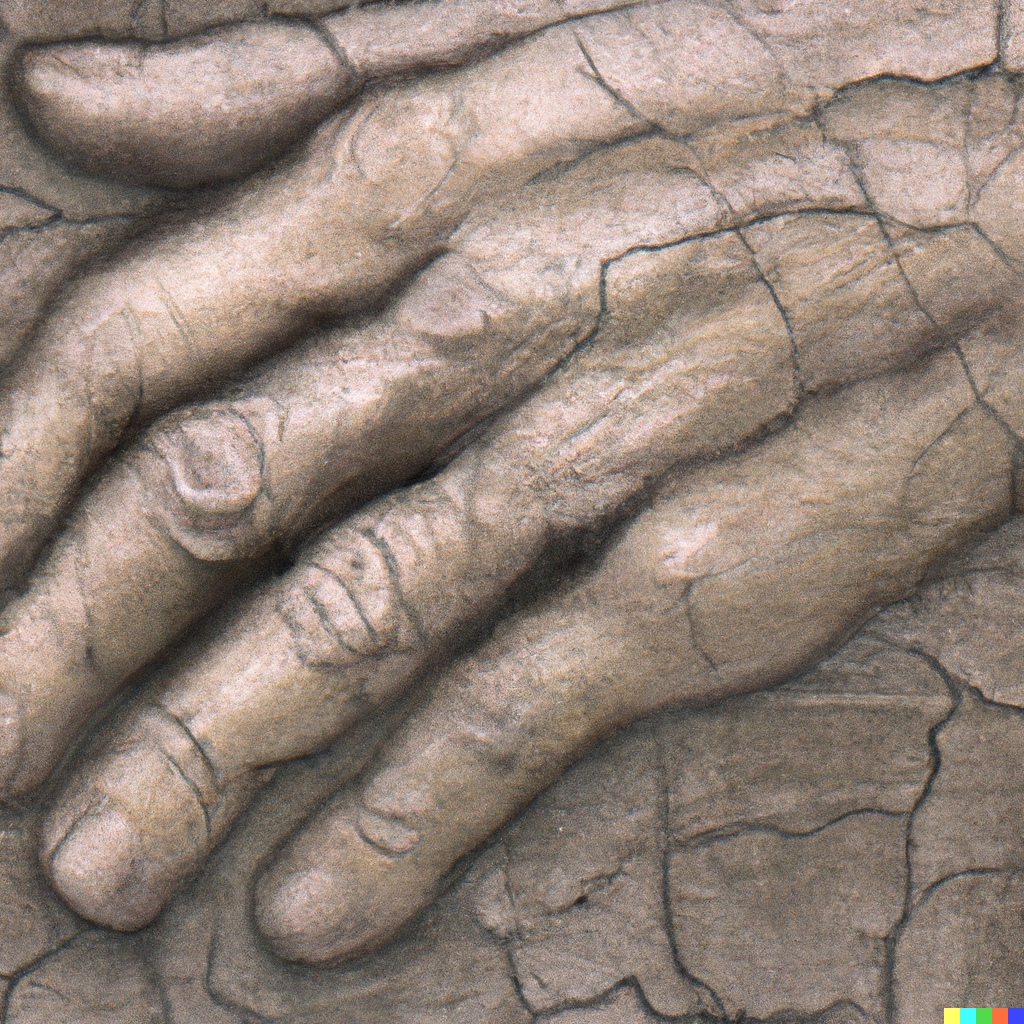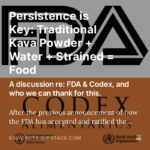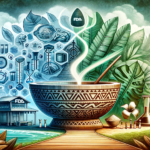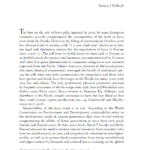
Kava dermopathy is a condition characterized by dry, cracked, scaly skin particularly focused on the arms, legs and face. This is not an acute reaction, and is something that develops over weeks and months when regularly consuming larger amounts of kava. This is not a rash. Reports of kava dermopathy can be seen as far back as the 1770s with the arrival of Captain Cook in Hawaii (Norton & Ruze 1994). Severity of dermopathy seems to be directly related to dose and frequency of consumption (Singh 2004). It should also be noted that some people, even drinking kava heavily for decades, never see this reaction.
Regular, or daily, kava consumption has been theorized to interfere with cholesterol metabolism in skin cells known as “keratinocytes,”. This interaction is thought to reduce production of ceramides secreted by organelles within the cell known as “lamellar bodies”. Ceramides are a type of long-chain, omega-hydroxylated fatty acid, and help maintain skin hydration, facilitate skin-cell shedding, and protect the skin barrier. Decreased ceramides can lead to dry, scaly, and thickened skin. The condition can be reversed by reducing or ceasing kava consumption in kava dermopathy. (Uchida et al 2008; Soares et al 2022; Norton 1998).
The exact mechanism of kava dermopathy is debated, but researchers suggest enzyme inhibition may be the culprit (Peterman et al 2019). Kava has been shown to inhibit enzymes known as CYPs (Zou et al 2002), particularly at locations CYP1A2 and CYP2E1 (Russmann et al 2005). This might also affect the enzyme CYP4F22, leading to skin effects similar to ichthyosis (Akiyama 2021). While no direct studies on this enzymatic interaction with kava exist, evidence is mounting that kavalactone consumption could cause this inhibition (White 2018).
In short, daily heavy kava drinking over long periods seems to possibly interfere with your skin’s ability to produce the compounds required to maintain the waterproof barrier. This allows moisture to escape the skin, accelerating the drying process, eventually interfering with the desquamation, or flaking of dead skin, and finally leading to the condition known as “Kava dermopathy” or “Kava ichthyosis”.
Sources:
Akiyama, Masashi. 2021. “Acylceramide Is a Key Player in Skin Barrier Function: Insight into the Molecular Mechanisms of Skin Barrier Formation and Ichthyosis Pathogenesis.” The FEBS Journal 288 (7): 2119–30. https://doi.org/10.1111/febs.15497.
Hannam, Sarah, Michael Murray, Lucia Romani, Meciusela Tuicakau, and Margot J Whitfeld. 2014. “Kava Dermopathy in Fiji: An Acquired Ichthyosis?” International Journal of Dermatology 53 (12): 1490–94. https://doi.org/10.1111/ijd.12546.
Peterman, Kaeleigh, and Emily Reynolds. 2019. “Kava-Induced Ichthyosis.” Journal of the Dermatology Nurses’ Association 11 (6): 280. https://doi.org/10.1097/JDN.0000000000000503.
Norton, S. A., and P. Ruze. 1994. “Kava Dermopathy.” Journal of the American Academy of Dermatology 31 (1): 89–97. https://doi.org/10.1016/s0190-9622(94)70142-3.
Norton, S. A. 1998. “Herbal Medicines in Hawaii from Tradition to Convention.” Hawaii Medical Journal 57 (1): 382–86. https://www.ncbi.nlm.nih.gov/pubmed/9509742.
Rendic, Slobodan. 2002. “Summary of Information on Human CYP Enzymes: Human P450 Metabolism Data.” Drug Metabolism Reviews 34 (1-2): 83–448. https://doi.org/10.1081/DMR-120001392.
Russmann, Stefan, Bernhard H. Lauterburg, Yann Barguil, Erwan Choblet, Pierre Cabalion, Katharina Rentsch, and Markus Wenk. 2005. “Traditional Aqueous Kava Extracts Inhibit Cytochrome P450 1A2 in Humans: Protective Effect against Environmental Carcinogens?” Clinical Pharmacology and Therapeutics. https://doi.org/10.1016/j.clpt.2005.01.021.
Singh, Yadhu N. 2004. Kava: From Ethnology to Pharmacology (Medicinal and Aromatic Plants – Industrial Profiles). CRC Press.
Soares, Rita B., Ricardo Jorge Dinis-Oliveira, and Nuno G. Oliveira. 2022. “An Updated Review on the Psychoactive, Toxic and Anticancer Properties of Kava.” Journal of Clinical Medicine Research 11 (14). https://doi.org/10.3390/jcm11144039.
Uchida, Yoshikazu, and Walter M. Holleran. 2008. “Omega-O-Acylceramide, a Lipid Essential for Mammalian Survival.” Journal of Dermatological Science 51 (2): 77–87. https://doi.org/10.1016/j.jdermsci.2008.01.002.
White, C. Michael. 2018. “The Pharmacology, Pharmacokinetics, Efficacy, and Adverse Events Associated With Kava.” Journal of Clinical Pharmacology 58 (11): 1396–1405. https://doi.org/10.1002/jcph.1263.
Zou, L., M. R. Harkey, and G. L. Henderson. 2002. “Effects of Herbal Components on cDNA-Expressed Cytochrome P450 Enzyme Catalytic Activity.” Life Sciences 71 (13): 1579–89. https://doi.org/10.1016/s0024-3205(02)01913-6.




